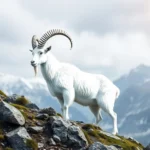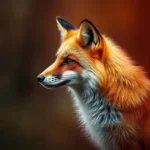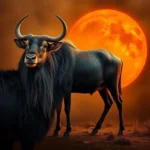The Cape Lion: A Symbol of Majesty and Strength
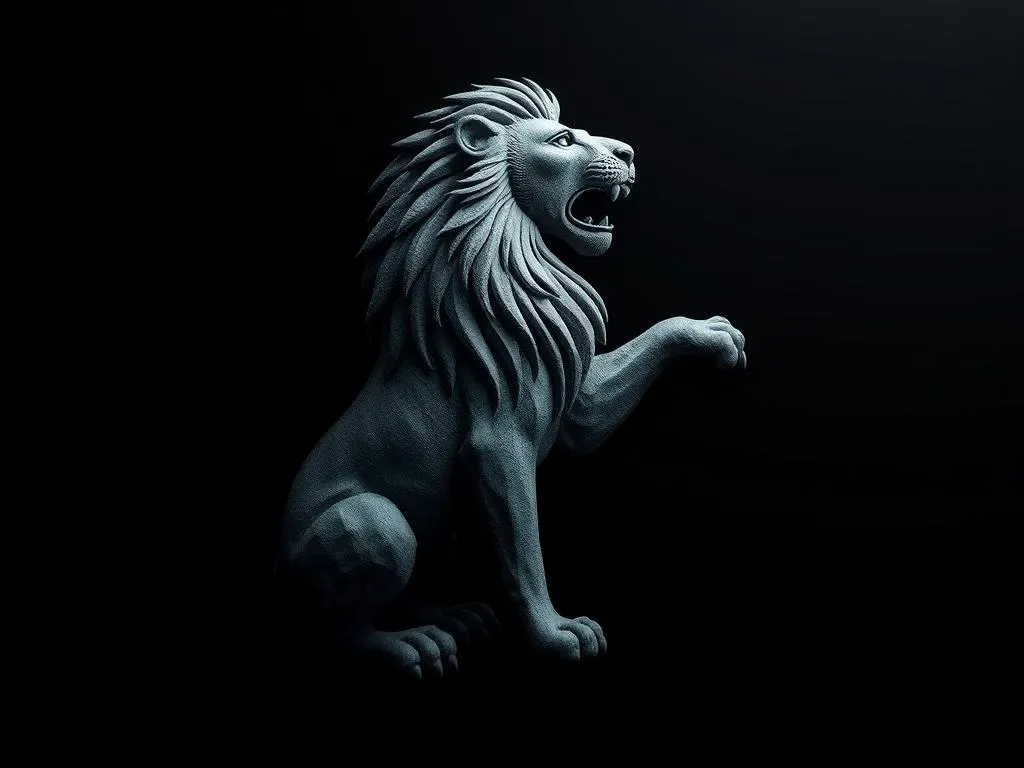
Disclaimer: Some images on this website are AI-generated artworks and may not accurately represent real animals.
The Cape Lion holds a revered place in the natural world and human culture. Known for its majestic appearance and powerful presence, this magnificent creature has come to symbolize various attributes such as strength, courage, and leadership. As we delve deeper into the symbolism and meaning of the Cape Lion, we will explore its historical context, physical and behavioral characteristics, and the rich tapestry of its spiritual significance across different cultures.
Understanding the Cape Lion
Historical Context
The Cape Lion, scientifically known as Panthera leo melanochaita, once roamed the southern regions of Africa, particularly in the Cape of Good Hope. This lion subspecies became extinct in the late 19th century due to extensive hunting and habitat loss. The last known individuals were seen in the early 1800s, marking the end of a remarkable chapter in the history of African wildlife.
In African culture, the Cape Lion held significant importance. It was often featured in folklore and stories that highlighted its strength and bravery. As apex predators, lions were respected and feared, symbolizing the wild and untamed aspects of nature. Tribal leaders frequently adopted lion imagery to signify their authority and power, further embedding the Cape Lion into the cultural fabric of the continent.
Physical Characteristics
The Cape Lion was distinguished by several remarkable physical traits, setting it apart from other lion subspecies. Below is a summary of its defining characteristics:
| Characteristic | Description |
|---|---|
| Coat Color | A tawny or golden hue, often with a darker mane in males |
| Mane | A long, dark mane that extended down the neck; a sign of maturity and virility |
| Size | Males weighed between 350-500 pounds; females were slightly smaller |
| Body Structure | Muscular build; strong forelimbs for hunting |
| Tail | Long, with a tuft of fur at the end |
These features contributed to the lion’s regal appearance and its reputation as the “King of the Jungle,” despite its habitats being savannas and grasslands rather than dense forests.
Behavioral Traits
The Cape Lion displayed fascinating social structures and behaviors. Lions are unique among big cats for their social nature, often forming prides typically consisting of related females, their offspring, and a few males. This cooperative living allowed them to be effective hunters, relying on teamwork to take down larger prey.
Hunting was a critical aspect of their survival strategy. The Cape Lion primarily preyed on large herbivores, such as zebras and wildebeests. Their hunting tactics included ambushes and coordinated efforts among pride members, showcasing their intelligence and physical prowess.
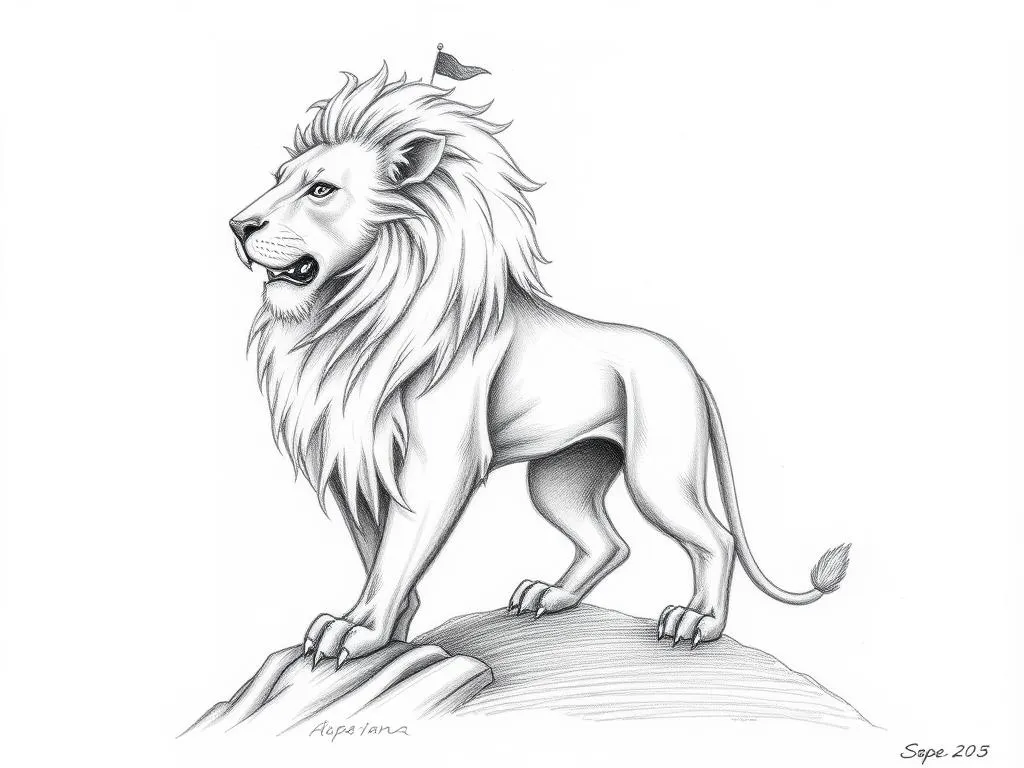
Symbolism & Spiritual Meaning
Courage and Strength
The Cape Lion stands as a powerful emblem of courage and strength. Its status as a top predator invokes a sense of bravery that resonates deeply in various cultural narratives. In many African myths, lions are depicted as guardians of the land, embodying the spirit of the warrior.
Stories often recount lions protecting their territory from invaders or aiding those in need, reinforcing the lion’s role as a symbol of valor. The majestic roar of the Cape Lion was not only a declaration of dominance but also a call to face challenges with bravery.
Leadership and Authority
In addition to courage, the Cape Lion symbolizes leadership and authority. Historically, lions have been associated with royalty, often depicted in coats of arms and flags as a representation of power. The lion’s ability to command respect and maintain order within its pride mirrors human social hierarchies.
In many cultures, the Cape Lion has served as an archetype for kingship. The phrase “king of the jungle” highlights its noble status, emphasizing strength, wisdom, and the responsibility that comes with leadership. Lions are often celebrated in literature and art as the ultimate figure of authority, inspiring leaders to embody similar traits.
Protection and Guardianship
The role of the Cape Lion in its ecosystem further enhances its symbolism of protection. As a top predator, it helps maintain the balance of wildlife populations, contributing to the health of the environment. This guardianship extends into the spiritual realm, where the lion is seen as a protector against chaos and harm.
In various cultures, the Cape Lion signifies a protective force. From ancient Egyptian deities depicted with lion heads to modern interpretations of lions as guardians of sacred spaces, this symbolism persists across time. The lion’s ability to ward off threats is a powerful reminder of the need for strength and vigilance in safeguarding one’s community.
The Cape Lion in Dreams
Dream Interpretation
Dreams featuring lions often carry significant meanings, particularly when it comes to the Cape Lion. Below are common themes associated with lions in dreams:
| Dream Theme | Description |
|---|---|
| Power and Control | Dreaming of a lion can signify personal power and authority in waking life |
| Fear and Challenge | A lion in a dream may represent a daunting challenge or fear that needs to be confronted |
| Leadership | Encountering a lion might suggest a need to embrace leadership qualities or assume a dominant role in a situation |
| Protection | Dreaming of a lion can symbolize the need for protection or the presence of a guardian spirit |
The presence of the Cape Lion in dreams often amplifies these themes, suggesting a strong connection to personal strength and resilience.
Messages from the Subconscious
When one dreams of the Cape Lion, it may signify a message from the subconscious regarding personal power and confidence. Such dreams might encourage individuals to embrace their inner strength, face challenges head-on, or take charge of their lives.
Encountering a Cape Lion in a dream can evoke feelings of empowerment, suggesting that the dreamer possesses the tools necessary to overcome obstacles. It serves as a reminder that, like the lion, they are capable of asserting themselves and commanding respect in their surroundings.
Modern Interpretations
Cultural Representations
In contemporary society, the Cape Lion continues to inspire various cultural representations. It appears in literature, art, and media, often symbolizing strength, courage, and leadership. From children’s stories featuring brave lion characters to adult literature exploring themes of power and responsibility, the lion remains a potent symbol.
Films and documentaries also celebrate the majesty of the lion, highlighting its role in the ecosystem and the importance of conservation efforts. These portrayals often emphasize the lion’s dignity and the necessity of preserving its legacy.
Conservation and Environmental Symbolism
The Cape Lion has become a significant symbol for wildlife conservation efforts. As an extinct subspecies, it serves as a poignant reminder of the fragility of ecosystems and the impact of human activities on wildlife. Conservationists use the Cape Lion as a rallying point to advocate for the protection of endangered species and their habitats.
Modern interpretations of the Cape Lion extend beyond its physical form to embody the spirit of resilience and the need for stewardship of the natural world. It inspires individuals and organizations to take action in preserving biodiversity and ensuring that future generations can appreciate the beauty and significance of wildlife.
Key Takeaways
The Cape Lion is rich in symbolism and meaning, resonating deeply within human culture and consciousness. Here are some key takeaways:
- The Cape Lion symbolizes courage and strength, representing bravery in the face of challenges.
- It embodies leadership and authority, serving as a powerful reminder of the responsibility that comes with power.
- The lion’s role in its ecosystem is central to its symbolism of protection and guardianship, reinforcing the importance of maintaining balance in nature.
- Dreams of the Cape Lion can signify personal empowerment, urging individuals to confront challenges and embrace their inner strength.
- The Cape Lion remains a relevant cultural icon, inspiring wildlife conservation efforts and modern interpretations of its legacy.
Conclusion
The Cape Lion stands as a testament to the majesty and strength inherent in the natural world. Its rich symbolism extends beyond mere representation, weaving through the fabric of culture, dreams, and conservation efforts. As we reflect on the enduring legacy of the Cape Lion, we are reminded of our connection to nature and the importance of protecting the powerful symbols that inspire us.
Exploring personal connections to the symbolism of the Cape Lion can lead to profound insights about our own strengths, leadership qualities, and the role we play in safeguarding the world around us. The lion’s spirit continues to inspire, reminding us of the courage, authority, and guardianship that we all possess within.
